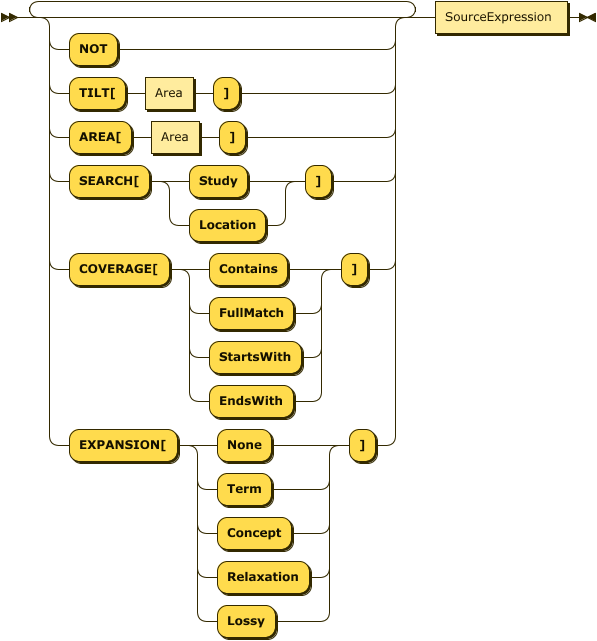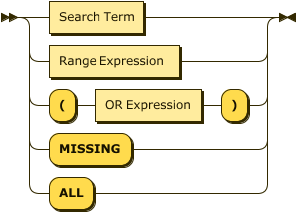Search syntax refers to the arrangement of search terms and operators in search expressions used for evaluation by the search engine.
A search expression consists of sequences of search terms and operators that are evaluated by the search engine to find lists of studies. The search operators affect which studies are returned by the search and their rank order in retrieval sets by changing how the search terms are contextualized or interpreted.
All search expressions are OR expressions.
Search terms are words or phrases that must appear as values in the study records returned by the search. A search term consists of a string of characters without embedded search operators. Enclosing a multi-word term in quotation marks indicates that all of the words in the search term must be found together in that order (that is, as a phrase) for a study record to be retrieved by the search (see below).

To search for an operator as part of a term, add a backslash before the operator (e.g., \MISSING). If the operator used is quotation marks, then only embedded quotes need to be preceded by a backslash (e.g., \"sleep deprivation\").
An OR expression consists of a list of one or more AND expressions (such as a search term or phrase) separated by binary Boolean OR operators (see below).

The following examples are all OR expressions that include AND expressions:
The OR operator has the lowest precedence among search operators. All AND expressions are evaluated before the OR expressions formed by connecting the AND expressions using OR operators.
An AND expression consists of a list of one or more operator expressions, separated by zero, one, or many binary Boolean AND operators (see below).

The following examples are all AND expressions that include operator expressions:
The AND operator has the second lowest precedence among search operators. All operator expressions are evaluated before the AND expressions formed by connecting the operator expressions using AND operators.
An operator expression consists of a sequence of zero, one, or more unary operators (e.g., the NOT operator and all context operators), followed by a source expression. Any number of operator expressions may precede a source expression (see below).

The TILT and AREA operators take search areas (labeled "Area" in the figure above) as a parameter. Note that the parameter is enclosed in square brackets, and there is no space bewtween the operator and the left bracket.
The SEARCH operator takes either "Study" or "Location" as a parameter, as show in the figure above.
The COVERAGE and EXPANSION operators take one of a small set of choices as a parameter (shown in the figure above).
The following examples are all operator expressions that include source expressions:
These unary operators have the second highest precedence after source expressions.
A source expression consists of a search term, a range expression, an OR expression enclosed in parentheses, and either the MISSING or ALL source operator (see below).

The following examples are all source expressions:
A range expression consists of a RANGE operator with minimum and maximum values as parameters. Use MIN to indicate the smallest value of interest in the search area, and use MAX to indicate the largest value of interest in the search area (see below).

Studies with no values in the search area will not be retrieved by a search that uses a range expression.
The order in which different types of search expressions are evaluated by the search engine is presented below. To increase the precedence of an expression, enclose that expression in parentheses.